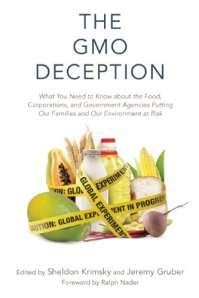Trade issues: eye-glazing, but worth the trouble. Today: The Trans-Pacific Partnership (TPP)
Sunday’s New York Times discussed how foreign governments are dropping millions on Washington DC think tanks to fund reports explicitly designed to influence government agencies to set policies favorable to the donor country’s interests. One such interest is food trade with Asia.
The line between scholarly research and lobbying can sometimes be hard to discern.
Last year, Japan began an effort to persuade American officials to accelerate negotiations over a free-trade agreement known as the Trans-Pacific Partnership (TPP), one of Japan’s top priorities. The country already had lobbyists on retainer, from the Washington firm of Akin Gump, but decided to embark on a broader campaign.
Akin Gump lobbyists approached several influential members of Congress and their staffs…seeking help in establishing a congressional caucus devoted to the partnership, lobbying records show. After those discussions, in October 2013, the lawmakers established just such a group, the Friends of the Trans-Pacific Partnership.
To bolster the new group’s credibility, Japanese officials sought validation from outside the halls of Congress. Within weeks, they received it from the Center for Strategic and International Studies, to which Japan has been a longtime donor. The center will not say how much money the government has given — or for what exactly — but an examination of its relationship with a state-funded entity called the Japan External Trade Organization provides a glimpse.
In the past four years, the organization has given the center at least $1.1 million for “research and consulting” to promote trade and direct investment between Japan and the United States. The center also houses visiting scholars from within the Japanese government…one Japanese diplomat…said the country expected favorable treatment in return for donations to think tanks. “If we put actual money in, we want to have a good result for that money — as it is an investment,” he said.
Ah yes, the Trans-Pacific Partnership (TPP). Let’s start with the context: The US has trade agreements with 20 countries.
These, says the US, provide many benefits:
Trade is critical to America’s prosperity – fueling economic growth, supporting good jobs at home, raising living standards and helping Americans provide for their families with affordable goods and services.
Obviously, Japan must think the TPP will do all that and more for Japan.
But trade negotiations run into trouble when one partner has higher food safety standards—Sanitary and Phytosanitary (SPS) Measures—than another.
This is an issue in current negotiations over the TPP.
Like other trade agreements, the negotiations are conducted in secret.
Over the past two years there has been a steady drip of stories about the secretive negotiations regarding the Trans Pacific Partnership (TPP). Members of Congress and congressional staffers have been stymied in their efforts to perform some measure of oversight while major corporations have reportedly been given unfettered access and influence over the deal. The public has been kept almost completely in the dark regarding negotiations that affect everything from food prices to our ability to innovate on the Internet…Historically, international trade negotiations have happened through the World Trade Organization…Trade negotiators have had trouble closing major deals over the past decade, in part because the public, and sometimes their elected officials, have stood up to decry these secret negotiations, demanding oversight opportunities and setting up websites to post leaked drafts of the agreements.
According to PoliticoPro, negotiations on TPP with Japan and 10 other countries in the Asia-Pacific region are close to conclusion, but pork producers, other farm groups, and Republicans are insisting that Japan eliminate all agricultural tariffs and completely open its market to U.S. agricultural exports.
Japan says it can offer improved market access but cannot eliminate all tariffs because of pressures from its own farm groups.
At the end of July, some House members demanded that Japan—and Canada—be dropped from the TPP if they do not agree to eliminating tariffs.
Trade negotiations work in predictable ways. for example, despite the North American Free Trade Agreement (NAFTA—and also see this link— which allows unfettered imports from Mexico, the US is imposing tariffs on Mexican sugar to prevent flooding the US market with cheap supplies that undermine sales of US sugar (NAFTA allows this).
The moral: In trade agreements, each country looks to maximize its own interests. Hence: Japan’s lobbying via Washington think tanks.







